The NVIDIA SHIELD Tablet Review
by Joshua Ho on July 29, 2014 9:00 AM EST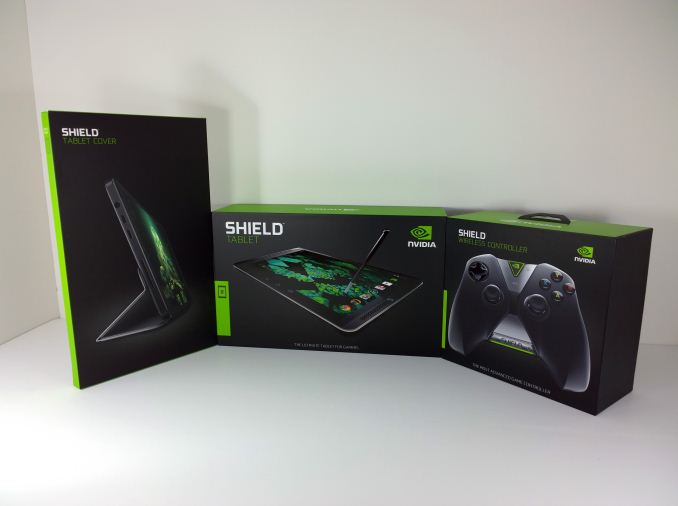
As I discussed in our launch article last week, the Shield tablet is very much the culmination of lessons learned from 2013. While the Tegra Note 7 was a decent tablet, it had to eke out a profit through hardware sales against competition that was willing to sell their tablets with no profit on hardware. Meanwhile the Shield portable was a good portable gaming device, but it was far too specialized to be anything but a gaming device. Without an established gaming ecosystem, NVIDIA struggled against established competitors.
As a result of these influences, today NVIDIA is becoming the first OEM to launch a serious gaming tablet running Android. While gaming tablets have been done before, they’ve been few and far between. Now it has always been technically possible to take a high end tablet and make it usable for gaming, but for the most part these attempts are marred by either the need for root or an application that requires extensive work on the part of the user to create proper control profiles for each game. In addition, the SoC in the tablet is often underequipped for intensive 3D gaming.
That’s where the Shield tablet comes in. With Tegra K1, a dedicated controller, 2x2 WiFi, and a huge amount of custom software, there’s definitely a lot of ground to cover. Once again, while the Shield tablet is a gaming device, it must also be a good tablet. To that end, NVIDIA has tried to differentiate this tablet with DirectStylus 2 and dual front facing speakers/bass reflex ports. I’ve included a table of specifications below to give a general idea of what the tablet is like.
| NVIDIA Shield Tablet | |
| SoC | Tegra K1 (2.2 GHz 4x Cortex A15r3, Kepler 1 SMX GPU) |
| RAM/NAND | 2 GB DDR3L-1866, 16/32GB NAND + microSD |
| Display | 8” 1920x1200 IPS LCD |
| Network | N/A or 2G / 3G / 4G LTE (NVIDIA Icera i500 UE Category 3/4 LTE) |
| Dimensions | 221 x 126 x 9.2mm, 390 grams |
| Camera | 5MP rear camera, 1.4 µm pixels, 1/4" CMOS size. 5MP FFC |
| Battery | 5197 mAh, 3.8V chemistry (19.75 Whr) |
| OS | Android 4.4.2 |
| Connectivity | 2x2 802.11a/b/g/n + BT 4.0, USB2.0, GPS/GLONASS, mini HDMI 1.4a |
| SIM Size | None or MicroSIM |
| Price | $299 or $399 (16GB/WiFi or 32GB/LTE) + $59 (optional controller) |
Hardware
Outside of the basic specs, the tablet itself has a much more subtle industrial and material design. While the large speaker grilles are maintained from the Tegra Note 7, the dimpled look and feel is gone. Instead, the finish is very much reminiscent of the Nexus 5. The feel isn’t quite rubbery the way soft touch finishes tend to be. Instead, it feels more like a high grain matte polycarbonate. Along the sides, there’s a noticeable chamfered edge where the back cover meets the display, although in practice this mostly affects aesthetics rather than in hand feel. The flip cover that is designed for the device is almost identical to the one in the Tegra Note 7, and folds up similarly. As with the Tegra Note 7, there are two angles that the flip cover can take. Overall, the aesthetic is much more subtle than the Tegra Note 7, and looks quite similar to the Nexus 7 (2013).
While it’s important for the tablet portion of the device to have decent material and industrial design, ergonomics and material design are critical for the controller. While the Shield portable had great ergonomics, it was heavy because the entire device had to fit in the controller. With Shield Tablet, that’s no longer the case. The result is that the controller is significantly lighter. While it still has some heft to it, I no longer feel the need to rest my hands against a table after significant playtime.
The controller itself is just as good as the one on the Shield Portable. The buttons, triggers, bumpers, and joysticks are all very close in feel. The one big difference are the tablet/Android controls. Instead of physical buttons, they’ve replaced the physical buttons with capacitive ones. The volume controls have also been moved down to the bottom of the controller and changed from a single button that triggers on-display volume controls to a rocker that allows direct manipulation of volume. Just above the volume rocker is a clickpad, which can be used to move a cursor through the UI. While this option exists, it’s a bit unpolished as the sensitivity isn’t tuned quite right to quickly navigate through the tablet.
Of course, there’s more to the controller than just the buttons and controls. NVIDIA has made sure to do things right by using WiFi Direct for communicating between the controller and the tablet. The frequency used depends upon what access point the tablet is connected to, so it can switch between 2.4 GHz and 5 GHz as necessary. NVIDIA claims that using WiFi Direct instead of Bluetooth drops latency by half, and also allows for microphone input and sound output via 3.5mm jack through the controller. In practice, the controller works great. I don’t have any complaints about this at all. Pairing is as simple as pressing and holding on the NVIDIA logo for a few seconds, then opening the pairing application. Up to four controllers can be paired to the tablet this way, which introduces interesting possibilities for local multiplayer games such as Trine 2. I also didn’t notice a difference in response time of the wireless controller when compared to the wired controller of Shield Portable. It’s incredibly important to get the controller right for gaming devices, and NVIDIA has nailed it. Overall, I’m happy with the basic hardware for both the controller and tablet. While it would be interesting to see a metal unibody design on the tablet, it’s difficult to justify at the price point that this device has to hit.
Of course, while hardware is important, software makes or breaks this tablet, so that’s next.


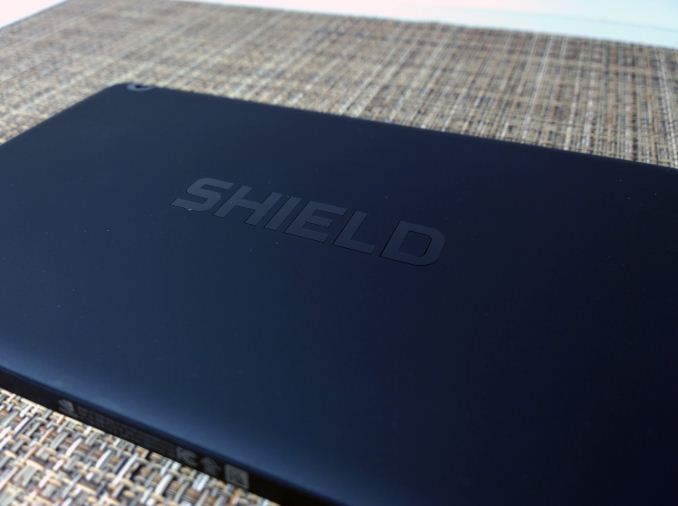
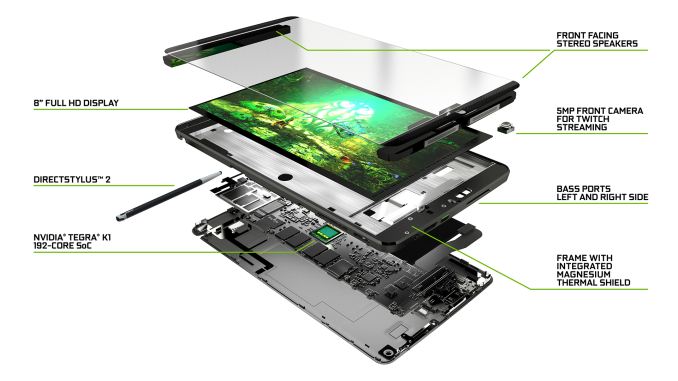
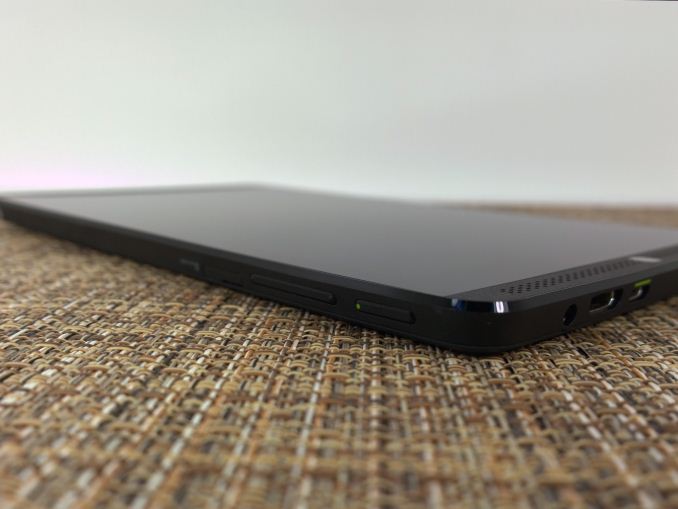
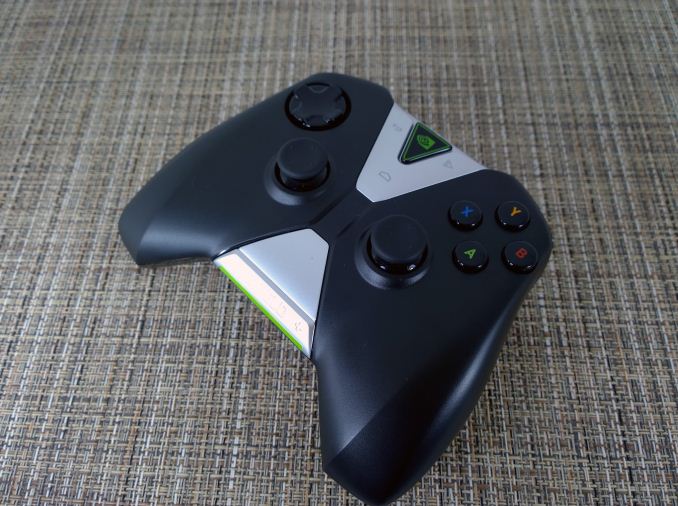








174 Comments
View All Comments
fivefeet8 - Tuesday, July 29, 2014 - link
Those arguments are the same ones made with the advent of gaming laptops and desktops. I can agree that the market for both is in the minority, but something needs to push the technology forward. At this point, the mobile space is ruled mostly by companies with technologies both hardware and software that have stagnated. Mostly because of the market conditions leaving pretty much only Qualcomm technology, but that has also caused them to become complacent to a large degree when it comes to software.schizoide - Tuesday, July 29, 2014 - link
Not really. Back in the day, games drove PC gaming hardware. You would go out and buy that new 3dfx card to play Quake 2. These days most PC games are console ports and low to mid-end hardware can play them just fine.Difference is that today there's an incredibly huge market full of mobile games with very modest hardware requirements, and very few are willing to release titles requiring top line hardware because the perception is those "core" gamers have consoles or gaming PCs.
You're right that if nobody builds mobile devices with higher-end capabilities those games will _certainly_ never come. That's dead on. But at the same time, I'm not going to buy a gaming device without an exclusive game that I really want. And 10 year old PC ports like portal don't cut it.
fivefeet8 - Tuesday, July 29, 2014 - link
That's the same argument you are making against the Shield Tablet. That it's hardware is not needed because most games run fine on lesser powered machines. Software has been playing catchup to PC hardware for years now, but we still have high end hardware to push the envelope.In any case, with the new Shield is a tablet that can do more than most on the market right now while still being able to push the technology forward. And you are correct, I wouldn't buy a gaming device either without a few games I really want, but then I'm not buying it simply for a gaming device only.
savagemike - Tuesday, July 29, 2014 - link
You might not buy a gaming device in that scenario. But this isn't just a gaming device it's also a tablet and as such can fill multiple uses.I'm not positive I'm going to buy one but I might. It's definitely on the list for consideration because it is so flexible. I wanted an 8"+ tablet and would very much like a stylus. Wasn't digging the extra price of the Samsung stylus models though.
For $300 this thing seems like it does lots of stuff pretty well. I would be surprised if there are not bundles for $325 or so that include the tablet and controller come the holidays.
We'll see. Want to see what the 64x version looks like too and also how pricing and quality play out for Android TV.
ArthurG - Tuesday, July 29, 2014 - link
comparing refurb price of a 6 months old item to a brand new model coming out today, very very fair...schizoide - Tuesday, July 29, 2014 - link
Sure. Why not? Money is money. You want to buy a small android tablet, Nexus 7 is at the top of your list, right?Friendly0Fire - Tuesday, July 29, 2014 - link
A lot of people don't consider refurbs. I know I don't.schizoide - Tuesday, July 29, 2014 - link
Fair enough, then it's only a 25% price premium. Certainly much more attractive, then.abrowne1993 - Tuesday, July 29, 2014 - link
The biggest problems I have with my 2013 Nexus 7 are CPU and GPU performance. If I didn't already have that tablet, I'd buy this one in a heartbeat.TheJian - Wednesday, July 30, 2014 - link
You must be kidding, comparing a refurb of an AGING product to a new product? $230 is the comparison, and for $70 extra you kick the crap out of nexus 7 2013. I didn't realize $300 was 2x $230. I guess I failed math.All the new games that come along with 20nm will likely have problems on that old thing, where K1 will keep on chugging (K1 will be the lowest common denominator next year at 20nm everywhere, and M1 or whatever they call maxwell version will be the new king). Not really interested in running all the games that are built for the lowest common denominator that will run on your aunt's galaxy s2. I'm interested in modern combat 5, asphalt 8, Ravensword, Dungeon Hunter 4 etc. All the stuff coming out this year and forward will get more potent. Though the old stuff is pretty nice too. The library keeps getting larger on android monthly.
Will they sell a lot of them? Tell that to google, they'll be using K1 in HTC Nexus 9. I'm guessing 10mil+ sell in that unit alone and it will probably be $400-500 ;) $300 for a tablet that blows everything else in it's class away is cheap. Get off welfare, get a better job etc and $300 won't sound like much more than $230...ROFL.
One of the other reviews did fine from North Dakota 1600 miles from California ;) Troll somewhere else please. Most of the ports have never sold more than 11mil (halflife2, Portal, Trine2 etc) so most people have never played the ports you're hating on. There are 1.2B android devices sold yearly now and growing. Next year with 20nm chips being at K1 level there will be 1.2B+ units top to bottom that can handle what K1 is doing and that will be what will create major game improvements. Everyone will be holding an Xbox360/ps3 in their hands that can act as a console output to tv. We're not talking angry birds any more even today. BTW, Trine2 came out 2011, Serious Sam3 BFE 2011, Portal 2008. We will start to see even more now especially after HTC Nexus9 hits. Not to mention companies like Gameloft, WB etc creating some top level stuff.